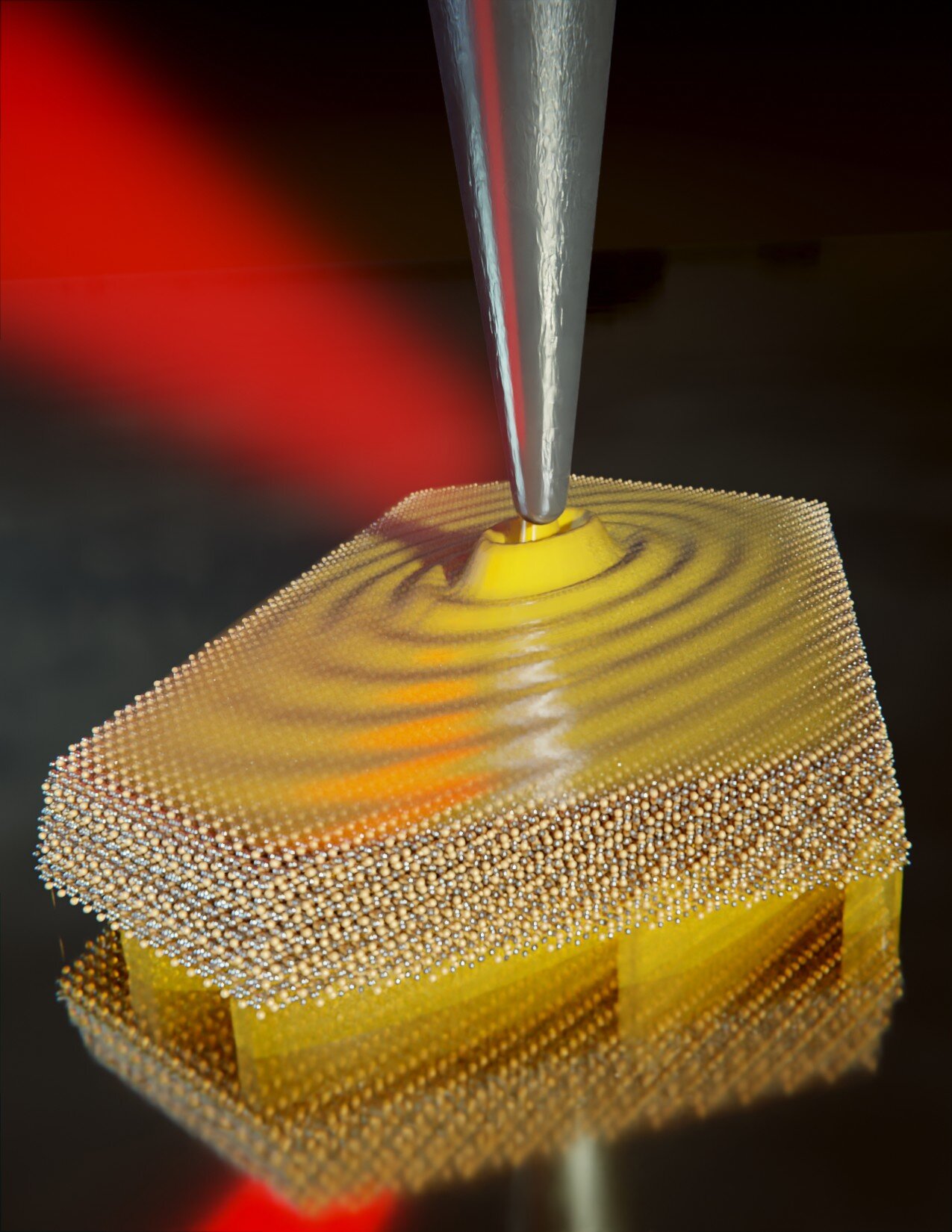An international team of scientists has imaged and analyzed THz waves that propagate in the form of plasmon polaritons along thin anisotropic semiconductor platelets with wavelengths reduced by up to 65 times compared to THz waves in free space.
What’s even more intriguing is that the wavelengths vary with the direction of propagation. Such THz waves can be applied for probing fundamental material properties at the nanometer scale and pave the way to the development of ultra-compact on-chip THz devices. The work has been published in Nature Materials.
Polaritons are hybrid states of light and matter that arise from the coupling of light with matter excitations. Plasmon and phonon polaritons are among the most prominent examples, formed by the coupling of light to collective electron oscillations and crystal lattice vibrations, respectively.
They play a crucial role in various applications, from sub-diffraction optical spectroscopy and ultrasensitive chemical sensors to ultracompact modulators for communication applications. In thin layers, polaritons can propagate with wavelengths up to 100 times shorter than the corresponding photon wavelength, allowing for manipulation of light on a much smaller scale than previously possible with conventional photonic devices.
While most of these ultra-confined polaritons have been observed in form of phonon polaritons in the mid-infrared spectral range, the researchers focused on plasmon polaritons, as these can exist in much broader spectral ranges. “On the other hand, plasmon polaritons often suffer from large damping, resulting in short propagation lengths. This has been challenging the observation of ultra-confined plasmon polaritons in real space,” says Shu Chen, first author of the publication.
2023-05-04 18:00:03
Original from phys.org
